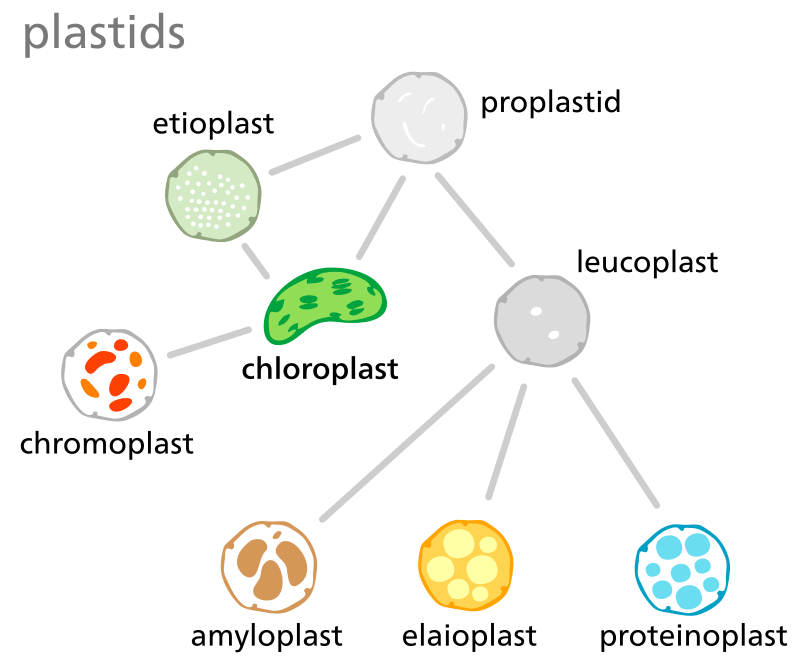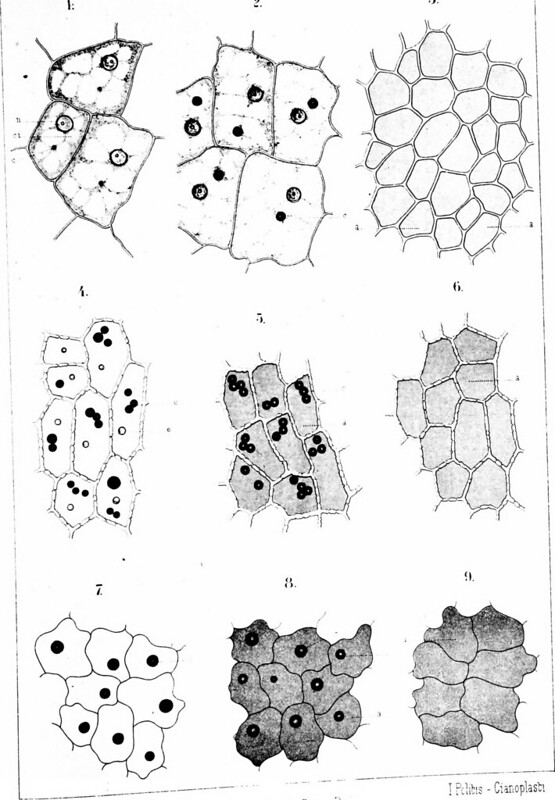Difference Between Aleuroplasts and Elaioplasts
The key difference between aleuroplasts and elaioplasts is that aleuroplasts are a special kind of leucoplasts that store proteins in plant cells while elaioplasts are colourless plastids found in plant cells that are used for the synthesis and storage of fatty acids, terpenes, and other lipids.
Leucoplasts are small colourless plastids found in plant cells. They are mainly specialized for synthesis and bulk storage of starch, proteins and lipids, etc. They do not contain pigments, especially chlorophylls. Hence, they are unable to carry out photosynthesis. Moreover, leucoplasts are smaller than chloroplasts. There are three main types of leucoplasts as amyloplasts, elaioplasts and aleuroplasts. Aleuroplasts or proteinoplasts are plastids that store proteins while elaioplasts are plastids that store oil and lipids. Therefore, aleuroplasts contain crystalline bodies of proteins, while elaioplasts contain fat or oil droplets.
CONTENTS
1. Overview and Key Difference
2. What are Aleuroplasts
3. What are Elaioplasts
4. Similarities Between Aleuroplasts and Elaioplasts
5. Side by Side Comparison – Aleuroplasts vs Elaioplasts in Tabular Form
6. Summary
What are Aleuroplasts?
Aleuroplasts, also known as proteinoplasts, are a type of leucoplasts that carry out production and storage of proteins in plants. They participate in amino acid synthesis. They are also non-pigmented plastids.

Aleuroplasts contain crystalline protein bodies that can act as sites for enzyme activity. These protein-containing leucoplasts are abundant in many seeds, such as brazil nuts, peanuts and pulses, etc.
What are Elaioplasts?
Elaioplasts are another type of colourless leucoplasts found in plant cells. The main function of elaioplasts is the production and storage of lipids and oils. Elaioplasts are seen mainly in the embryonic leaves of oilseeds, citrus fruits, as well as in the anthers of many flowering plants.

They are small rounded organelles filled with oil droplets (plastoglobuli). Moreover, elaioplasts involve in the formation of terpenes and fatty acids.
What are the Similarities Between Aleuroplasts and Elaioplasts?
- Aleuroplasts and elaioplasts are two types of leucoplasts that arise from proplastids.
- Both aleuroplasts and elaioplasts are found in plant cells.
- They are rounded organelles known as plastids.
- They are non-pigmented plastids specialized for bulk storage of proteins and lipids, etc.
- Both types of plastids are smaller than chloroplasts.
What is the Difference Between Aleuroplasts and Elaioplasts?
Aleuroplasts are a type of leucoplasts that are responsible for the synthesis and storage of proteins in plant cells while elaioplasts are another type of leucoplasts that are responsible for the synthesis and storage of lipids in plant cells. So, this is the key difference between aleuroplasts and elaioplasts.
Moreover, both aleuroplasts and elaioplasts are colourless plastids that are smaller than chloroplasts. But, elaioplasts contain fat droplets called plastoglobuli, while aleuroplasts contain crystalline bodies of proteins which act as a site for enzymatic activities. Therefore, this is another significant difference between aleuroplasts and elaioplasts.
Besides, another difference between aleuroplasts and elaioplasts is that aleuroplasts are abundant in many seeds, such as brazil nuts, peanuts and pulses, etc., while elaioplasts are seen mainly in the embryonic leaves of oilseeds, citrus fruits, as well as in the anthers of many flowering plants.

Summary – Aleuroplasts vs Elaioplasts
Aleuroplasts and elaioplasts are two types of non-pigmented plastids which are leucoplasts found in plant cells. In fact, they are plant cell organelles appearing as small rounded organelles under the microscope. Aleuroplasts are specialized to produce and store proteins while elaioplasts are specialized to produce and store oil and lipids. So, this is the key difference between aleuroplasts and elaioplasts.
Reference:
1. “Elaioplast.” Wikipedia, Wikimedia Foundation, 14 Dec. 2019, Available here.
2. “Plastids: Definition, Structure, Types & Functions.” Study.com, Available here.
Image Courtesy:
1. “Plastids types flat” By User:LadyofHats, modified by Kelvinsong. – File:Plastids types en.svg (CC0) via Commons Wikimedia
2. “Image from page 134 of “On the elaioplasts in mono- and dicotyledonous plants. –On special cellular bodies which form Anthocyanine. –On a special cellular body found in two orchids” (1914)” By Internet Archive Book Images (No known copyright restrictions) via Flickr
ncG1vNJzZmivp6x7pbXFn5yrnZ6YsqOx07CcnqZemLyue8OinZ%2Bdopq7pLGMm5ytr5Wau26ty56sq6egoa60wNJmmKecXZq5orXOqaOaq6SofA%3D%3D